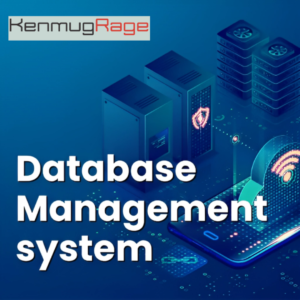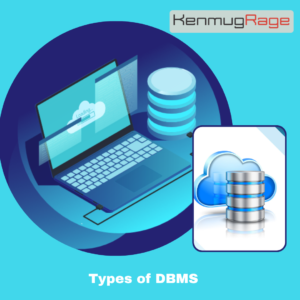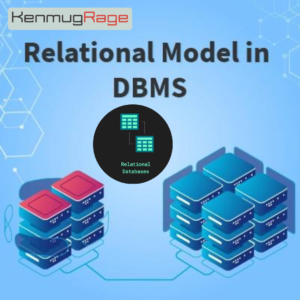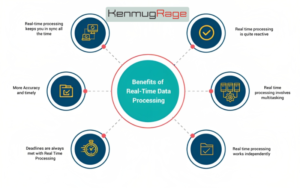” Navigating Data : Mastering Database Management Systems”
Database Management Systems( DBMS) are essential tools for managing data and information. They’re used in a wide range of diligence and are crucial to keeping data secure and organised. In this blog post, we’ll explore the basics of DBMS, how they can be used to navigate data, and how to master them for optimal use.
We will also discuss the different types of DBMS and their advantages and disadvantages. By the end of this post, you should have a better understanding of how to use and manage Database Management Systems.
1.The significance of Database Management Systems
Database Management Systems( DBMS) play a pivotal part in managing data and information effectively. In moment’s digital age, where data is constantly being generated and participated, the significance of DBMS can not be exaggerated.
Whether you are a small business proprietor, an IT professional, or a data critic, understanding and exercising DBMS is essential for maximising the eventuality of your data. One of the primary reasons why DBMS are important is their capability to keep data organised.
With DBMS, data can be structured and stored in a way that allows for easy reclamation and manipulation. This association not only saves time but also improves the effectiveness of data- related tasks. Whether you need to search for specific information, dissect trends, or induce reports, DBMS can simplify these processes by furnishing a structured frame for data storehouse and reclamation. DBMS also play a critical part in data security.
With the rise of cyber pitfalls and data breaches, icing the safety of sensitive information is consummate. DBMS give mechanisms for enforcing access controls and data encryption, guarding your data from unauthorised access. Also, regular backups and data recovery features offered by DBMS ensure that data can be restored in the event of any unlooked-for issues.
2.Types of DBMS
Types of DBMS Now that we understand the significance of Database Management Systems( DBMS), let’s claw into the different types of DBMS that are generally used. There are several types of DBMS, each with its own unique characteristics and strengths. Understanding the different types can help you choose the right one for your specific requirements.
- Relational DBMS :This is the most common type of DBMS used moment. It organises data into tables with rows and columns, allowing for effective storehouse, reclamation, and manipulation of data. Relational DBMS use SQL( Structured Query Language) as the primary language for interacting with the database. Some popular relational DBMS include MySQL, Oracle, and Microsoft SQL Garçon.
- Object-oriented DBMS :This type of DBMS is designed to handle complex data types and connections, similar as multimedia and spatial data. It uses an object-aware model to store and manage data, which allows for further inflexibility and extensibility. Object-aware DBMS also support heritage and encapsulation, making them ideal for operations that bear complex data structures.
- Hierarchical DBMS :In this type of DBMS, data is organised in a hierarchical structure, analogous to a tree- suchlike format. Each record is connected to a parent record, forming a hierarchical relationship. This type of DBMS is generally used in mainframe systems and is known for its effectiveness in handling large quantities of data. Still, hierarchical DBMS can be rigid and delicate to modify.
- Network DBMS :Network DBMS is analogous to hierarchical DBMS, but it allows for further flexible connections between records. It uses a network model, where records can have multiple parent and child records, forming complex networks of connections. This type of DBMS is suitable for operations with largely connected data.
- NoSQL DBMS: NoSQL( Not Only SQL) DBMS is a fairly new type of DBMS that’s designed to handle large volumes of unshaped and semi-structured data. Unlike relational DBMS, NoSQL DBMS doesn’t use SQL for querying data. Rather, it uses flexible data models, similar as crucial- value dyads, documents, graphs, or columnar databases, depending on the specific NoSQL database.
3.Understanding Data Models 
Understanding data models is pivotal when it comes to navigating database operation systems( DBMS). A data model is an abstract representation of how data is organised and structured within a database. It serves as a design for designing databases and defines the connections between different data rudiments.
There are several types of data models, each with its own unique characteristics and uses. The most generally used data model in DBMS is the relational data model. This model organises data into tables with rows and columns, with each table representing a specific reality or conception.
Connections between tables are established through keys, which are used to link data across different tables. Another popular data model is the hierarchical data model, which organises data in a tree- suchlike structure with parent- child connections. This model is generally used in mainframe systems and is effective for handling large quantities of data. Still, it can be rigid and delicate to modify. The network data model is analogous to the hierarchical model but allows for further flexible connections between records.
In this model, records can have multiple parent and child records, forming complex networks of connections. This model is suitable for operations with largely connected data. In recent times, the NoSQL( Not Only SQL) data model has gained fashionability, particularly for big data and real- time operations. NoSQL databases use flexible data models, similar as crucial- value dyads, documents, graphs, or columnar databases, to store and recoup data.
4.Relational Databases
Relational databases are the most common type of database operation system( DBMS) used at the moment. They give a structured and systematised way to store, recoup, and manipulate data. In a relational database, data is organised into tables, with each table representing a specific reality or conception.
These tables are also linked together through keys, which establish connections between the data. One of the crucial advantages of relational databases is their capability to insure data integrity and thickness. The use of keys and connections between tables allows for effective and accurate reclamation and manipulation of data.
This helps to exclude data redundancy and ensures that information is always over- to- date and dependable. Relational databases also give a flexible and scalable result for managing data. They can handle large quantities of data and can fluently accommodate changes and updates to the database structure. This scalability makes them suitable for a wide range of operations, from small businesses to large enterprises.
In addition, relational databases are compatible with Structured Query Language( SQL), which is a standardised language for managing and manipulating data. SQL provides an important and effective way to interact with the database, allowing users to fluently search, sludge, and dissect data. Despite their numerous advantages, relational databases do have some limitations. They may not be suitable for operations that bear handling complex data types, similar to multimedia or spatial data.
5.Best Practices in DBMS
To make the most out of your Database Management Systems( DBMS) and ensure effective and effective data operation, it’s important to follow stylish practices. These practices can help you optimise your database operations, ameliorate data quality, and enhance the overall performance of your DBMS.
First and foremost, it’s pivotal to have a well- defined database schema. The schema defines the structure and association of your database, including the tables, columns, and connections between them. By precisely designing and enforcing a schema, you can ensure that your database is effective, easy to maintain, and meets your specific business requirements.
Regular database backups are another essential practice. Backing up your data at regular intervals protects you from implicit data loss due to system failures, mortal crimes, or other unlooked-for circumstances. These backups should be stored securely, immaculately in an out- point position or in the pall, to ensure the safety and availability of your data. Monitoring and performance tuning are also critical. Keep an eye on your database’s performance criteria , similar as response time, outturn, and resource application.
Identify and address any performance backups or inefficiencies, similar as slow queries or inadequate tackle coffers, to optimise your database’s performance. Database security should be a top precedence as well. apply access controls and stoner authentication mechanisms to ensure that only authorised individuals can pierce and modify the data. Regularly update and patch your DBMS to cover against security vulnerabilities.
Conclusion :
In this blog post, we’ve explored the world of Database Management Systems( DBMS) and excavated into their significance, types, and stylish practices. DBMS are essential tools for managing data effectively, and understanding and exercising them can bring significant benefits to businesses and individualities likewise.
We started by understanding the significance of DBMS in managing data efficiently.From organising data to icing data security and easing data sharing and collaboration, DBMS play a pivotal part in maximising the eventuality of your data.
Also Read : Cloud Adoption in Insurance Industry: Why It Is Necessary
Also Read : Common Mistakes to Avoid When Implementing an Ecommerce SEO Strategy




